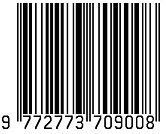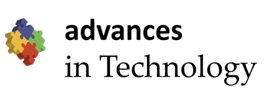Grouping the Potential Local Feed Ingredients for Ornamental Fish Feed based on their Nutrient Composition, Cost, and Availability
DOI:
https://doi.org/10.31357/ait.v2i2.5445Keywords:
clustering, feed ingredients, ornamental fish, principal component analysisAbstract
In the ornamental fish industry, there is a growing concern about the higher freight cost of feed ingredients. The present study aimed to cluster the locally available ingredients based on their nutrient contents, price, and availability. A total of 15 ingredients; fish meal (FM), by-catches (BC), soybean seeds (Soy), maize (Ma), duckweed (DW), Azolla pinnata (Az), rice bran (RB), shrimp shells (SS), palmyrah fruit pulp (PFP), red seaweed (RS), wheat flour (WF), cassava flour (CF), cornflour (CoF), coconut copra waste (CCC), and groundnut cake (GNC) were selected as locally available ingredients. Principal Component Analysis (PCA) was performed by grouping the ingredients based on their nutrient contents, price, and availability using Minitab 16. In PCA, the two first components accounted for 57.50% of the total variance in the initial data. Protein, calcium, phosphorus, and price contribute positively with component 1, whereas carbohydrate content is related negatively to this component. Calcium and ash content correlated positively with component 2 and fat, gross energy, and availability were linked negatively to it. The PCA allowed the clustering the ingredients into four groups. Ingredients in Group 1, including Az, SS, RB, DW, and RS showed a positive correlation with component 2 and they contain more fiber although, they are not accessible throughout the year. Ingredients of Group 2, PFP, WF, CoF, and CF are excellent sources of starch but contained less protein content (0.94%, 11.00%, 0.00%, and 2.80% respectively). CCC, Ma, GNC, and SB pertain to group 3 correlating poorly with component 2. They are an excellent source of protein with the advantage that they are relatively affordable and easy to available than the other groups. Ingredients in group 4 incorporated BC and FB. Although they are high in protein, they are expensive and very poor in carbohydrates. Therefore, it is recommended that the ingredients in group 3 are the best choice for feed formulation with balanced nutrition at a low cost for fish feed preparation.

Downloads
Published
How to Cite
License
Copyright (c) 2022 Sutharshiny Sathyaruban, Deepthi Inoka Uluwaduge, Sivashanthini Kuganathan, Harichandra Khalingarajah, Partheepan Thavaraja

This work is licensed under a Creative Commons Attribution-NonCommercial-NoDerivatives 4.0 International License.
The Authors hold the copyright of their manuscripts, and all articles are circulated under the terms of the Creative Commons Attribution License, which permits unrestricted use, distribution, and reproduction in any medium, as long as that the original work is properly cited.
The use of general descriptive names, trade names, trademarks, and so forth in this publication, even if not specifically identified, does not imply that these names are not protected by the relevant laws and regulations. The authors are responsible for securing any permissions needed for the reuse of copyrighted materials included in the manuscript.




